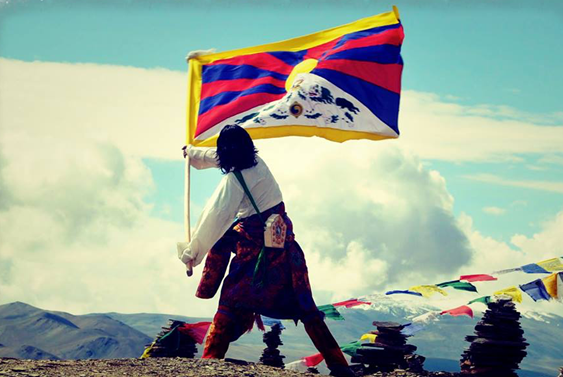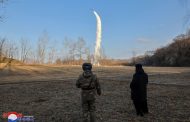Editor’s Note
Tibetan history is a roller-coaster ride, with Tibet at some stages dominating the region while at others being subjected to foreign rule and even a protectorate status. Currently, it’s undergoing a focused and systematic Sinicization attempt, with Beijing bent upon ensuring that these proud people lose their identity and get absorbed in the Chinese cultural milieu. The following piece provides an insight into the Chinese design of the ongoing assimilation campaign.
At Strategic Crossroads
Perched atop the “Roof of the World,” Tibet’s strategic significance stems from its unique geo-cultural position. Nestled between the vast emptiness of the erstwhile Soviet Union to the west and the burgeoning empires of India and China to the south and north, it has acted as a cultural sponge, absorbing and transmitting influences for millennia. This constant ebb and flow – Buddhist philosophies from India, artistic styles from China, nomadic traditions from the steppes – has woven a rich tapestry into the very fabric of Tibetan identity. Yet, its strategic allure has also brought political turmoil as empires vied for control of this critical Himalayan gateway, shaping not just its borders but also the complex interplay of cultures that defines Tibet’s enduring legacy.
Glorious History
Tibet’s history sparkles with periods of immense political, military and cultural brilliance, starting with the reign of Songtsen Gampo in the 7th century. His vision saw the unification of disparate Tibetan tribes, laying the foundation for a vast empire. Through strategic marriages and military prowess, he extended Tibetan influence from the Caspian Sea to the borders of China, controlling the silk route and thereby establishing a golden age for Tibet. In 763, Tibetan forces briefly held sway in Xian, the capital of the great Tang Empire of China and placed an emperor of their own choice on the Chinese throne. The first ever treaty between the Chinese and Tibetans was signed in 783 which fixed the boundary between the two at the eastern edge of the present-day Gansu province.
Bon and Buddhist traditions flourished, with the latter finding its expression in the iconic Jokhang Temple and the Potala Palace, architectural wonders that continue to awe. This era also witnessed the adoption of a written script, solidifying Tibetan identity and paving the way for a literary renaissance. This golden age resonated for centuries, leaving an indelible mark on the Tibetan psyche and shaping its unique cultural identity.
Mongol and the Chinese Influence
However, Tibet could not sustain its glory beyond the 12th century due to internal power struggles and external threats that constantly marred the Tibetan landscape. In 1207, the Tibetans acquiesced to the Mongols, who subsequently appointed the Sakya head lama (later christened Dalai Lama) as their Viceroy in Lhasa. In 1279, with the establishment of the Mongol Yuan dynasty in China, Tibet became a part of the Mongolian empire and remained so for about a century. Tibet regained its independence as the Ming dynasty came to power in China. Later, the Dzungar Mongols gained ascendance in Tibet, and it took the Chinese Qing dynasty to intervene militarily in 1718-19 to oust them.
Claiming this as a “conquest” of Tibet, the Qing placed two residents with a body of troops at Lhasa. The Dalai Lama was established in a position of full temporal power and ruled Tibet as a Qing “protectorate”. Although internally, Tibet continued to enjoy almost full autonomy as Chinese law, language, and writing systems were not applied in Tibet. This arrangement continued well into the 20th century; barring a few hostile incidents between the Chinese and the Tibetans, the arrangement ran well.
A Pawn in the Great Game
The British, who understood the strategic importance of Tibet, more so given the increasing rivalry with the Russians to exercise control over Central Asia, tried to establish diplomatic and business relations with Tibet. However, China did not allow the British overtures to succeed. The British finally launched the “Younghusband Expedition” in 1904, which resulted in directly signing a treaty with the Tibetans. This treaty was followed by the signing of the Sino-British convention in 1906 regarding the status of Tibet. The British brokered another tripartite treaty in 1914, the “Shimla Convention”, to mediate the growing dispute between China and Tibet and to define the India-Tibet border. The Chinese reluctantly joined the convention and initiated the draft but refused to sign the final version, which they refused to acknowledge to date.
The Nationalist Government of China, which succeeded the Qing Empire, also claimed sovereignty over Tibet, Mongolia, and Sinkiang. Nevertheless, Article 120 of its constitution, drafted in 1949, stated, “The self-government system of Tibet shall be safeguarded”.
As the communists came to power after defeating the nationalists, they launched an invasion to “liberate” Tibet in October 1950, forcing the Dalai Lama to succumb and sign a treaty. This treaty, signed in May 1951, also agreed to respect the status quo regarding Tibet.
Systematic Sinicization
Immediately after the occupation of Tibet, the Chinese Communist Party members, government officials, and masses of Chinese immigrants started coming into Tibet. They slowly began impacting politics, religion, language and economics. The Tibetans resented this trend and caused the “Khampa Rebellion” of 1958, followed by a declaration of independence by the Tibetans, repudiating the 1951 agreement. This uprising was put down with a heavy hand, and the Dalai Lama fled to India, ceding the political space to the communists.
The “Cultural Revolution”, like in other parts of China, had a disastrous impact on Tibet wherein thousands of ordinary people and monks were imprisoned, almost all the monasteries and temples closed or destroyed, and a system of communes introduced, which affected the very core of Tibetan society, religion, and economy.
Since then, China has been making immense effort to integrate Tibetan culture and society with that of China, thereby raising serious concerns about the erosion of Tibetan language, religion, and identity. While Tibetan remains an official language, Mandarin now dominates education and administration. Similarly, religious practices face limitations as monasteries are subject to increased surveillance.
Uncertain Future
Beijing’s current stance offers little hope for concessions on Tibetan autonomy, be it administrative or religious, as promised in the past. The Chinese government, under Xi Jinping’s leadership, seems unwilling even to engage in dialogue with the Dalai Lama, whom all Tibetans recognise as their spiritual and temporal leader. This hardening stance has only intensified efforts to assimilate Tibet into the fabric of China.
These stark realities cast a long and uncertain shadow on the future of Tibet. Concerns loom large, particularly regarding selecting the Dalai Lama’s successor and the ongoing assimilation campaign. The coming years will be pivotal as a crucible determining whether Tibet’s rich legacy endures. Can the unwavering spirit of its people, its dedication to cultural preservation, and the steadfast support of the international community stand firm in the face of these looming uncertainties? Only time will tell.
Maj Gen Gajinder Singh (Retd)











































1 Comments
Ramakant Kaushal
Great coverage.
Have a question…in the concern of Tibet, can’t they knock the door of UN and have continuous discussion until it gets resolved.